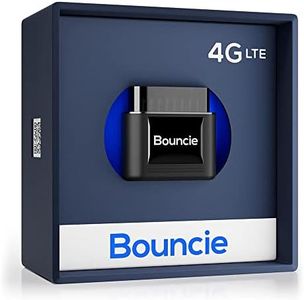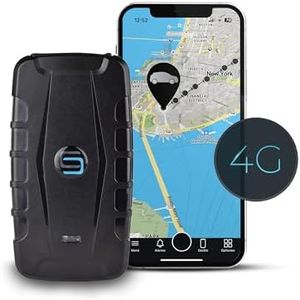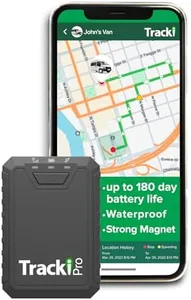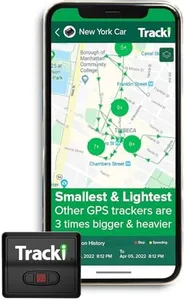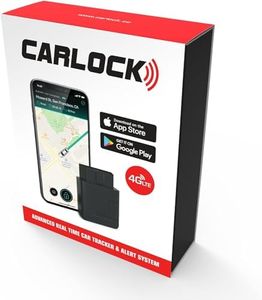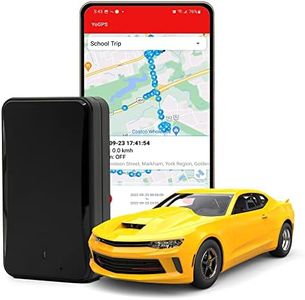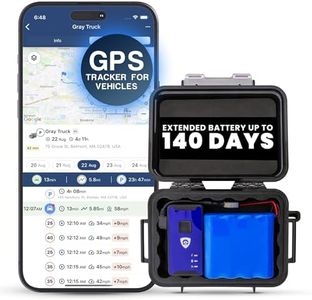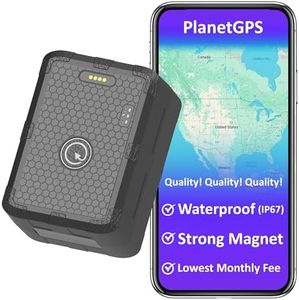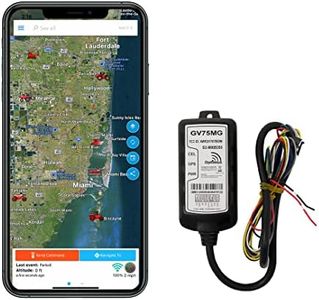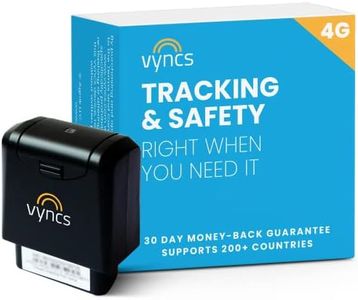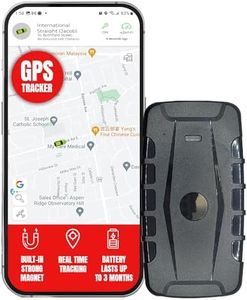We Use CookiesWe use cookies to enhance the security, performance,
functionality and for analytical and promotional activities. By continuing to browse this site you
are agreeing to our privacy policy
10 Best Car Tracking Devices
From leading brands and best sellers available on the web.Buying Guide for the Best Car Tracking Devices
Choosing the right car tracking device can make a big difference in how you monitor and protect your vehicle. These devices use technology to help you know where your car is at all times, which can be useful for security, fleet management, or keeping an eye on young drivers. To find the best fit, it's important to understand the main features and how they relate to your needs. Think about what you want to achieve with the device—whether it's real-time tracking, theft recovery, or monitoring driving habits—and let that guide your decision.Tracking Technology (GPS vs. Cellular vs. Radio Frequency)Tracking technology refers to how the device determines and communicates the location of your car. GPS is the most common and provides accurate, real-time location data almost anywhere outdoors. Cellular-based trackers use mobile networks to send location data, which means they work well in areas with good cell coverage but may struggle in remote places. Radio frequency trackers are less common but can be useful for short-range tracking, especially in areas where GPS or cellular signals are weak. If you need to track your car over long distances or in real time, GPS with cellular connectivity is usually best. For local tracking or in places with poor signal, consider a device with radio frequency capabilities.
Real-Time vs. Passive TrackingThis spec describes whether the device sends location updates instantly (real-time) or stores them for later download (passive). Real-time trackers let you see your car's location as it moves, which is great for theft recovery or monitoring driving habits. Passive trackers record data internally and require you to retrieve it later, which can be enough for reviewing trips but not for immediate updates. If you want to respond quickly to emergencies or always know where your car is, real-time tracking is the way to go. If you just need to review routes after the fact, passive tracking may be sufficient.
Power Source (Battery-Powered vs. Hardwired)The power source determines how the device stays on. Battery-powered trackers are portable and easy to install, but need regular recharging or battery replacement. Hardwired trackers connect directly to your car’s electrical system, so they don’t need recharging and are harder to tamper with. If you want a simple, temporary solution or need to move the tracker between vehicles, battery-powered is convenient. For long-term, always-on tracking, especially for security, hardwired devices are more reliable.
Update FrequencyUpdate frequency is how often the device sends location data. Some trackers update every few seconds, while others might update every few minutes or only when the car moves. Frequent updates give you a more accurate, real-time picture but can use more battery and data. Less frequent updates save power and data but may miss some details. If you need to monitor driving in detail or respond quickly to movement, choose a device with high update frequency. For basic location checks, lower frequency may be enough.
Geofencing and AlertsGeofencing lets you set virtual boundaries on a map, and the device will alert you if the car enters or leaves these areas. This is useful for keeping tabs on young drivers, managing fleets, or getting notified if your car is moved without permission. Some devices offer customizable alerts for speed, movement, or tampering. If you want to be proactive about security or monitoring, look for a device with flexible geofencing and alert options.
Data Storage and AccessThis refers to how and where your tracking data is stored and how you can access it. Some devices store data in the cloud, accessible via apps or websites, while others keep it on the device itself. Cloud storage is convenient for accessing data from anywhere and sharing it with others, but may require a subscription. Local storage is more private but less accessible. If you want easy access and sharing, cloud-based storage is ideal. For privacy or offline use, local storage may be better.
Installation and SizeInstallation can range from simple plug-and-play devices to more complex hardwired setups. Size matters if you want the device to be hidden for security reasons. Smaller devices are easier to conceal but may have shorter battery life. If you prefer a quick, DIY setup, look for plug-in or magnetic trackers. For a more permanent and discreet solution, consider a small, hardwired device.
